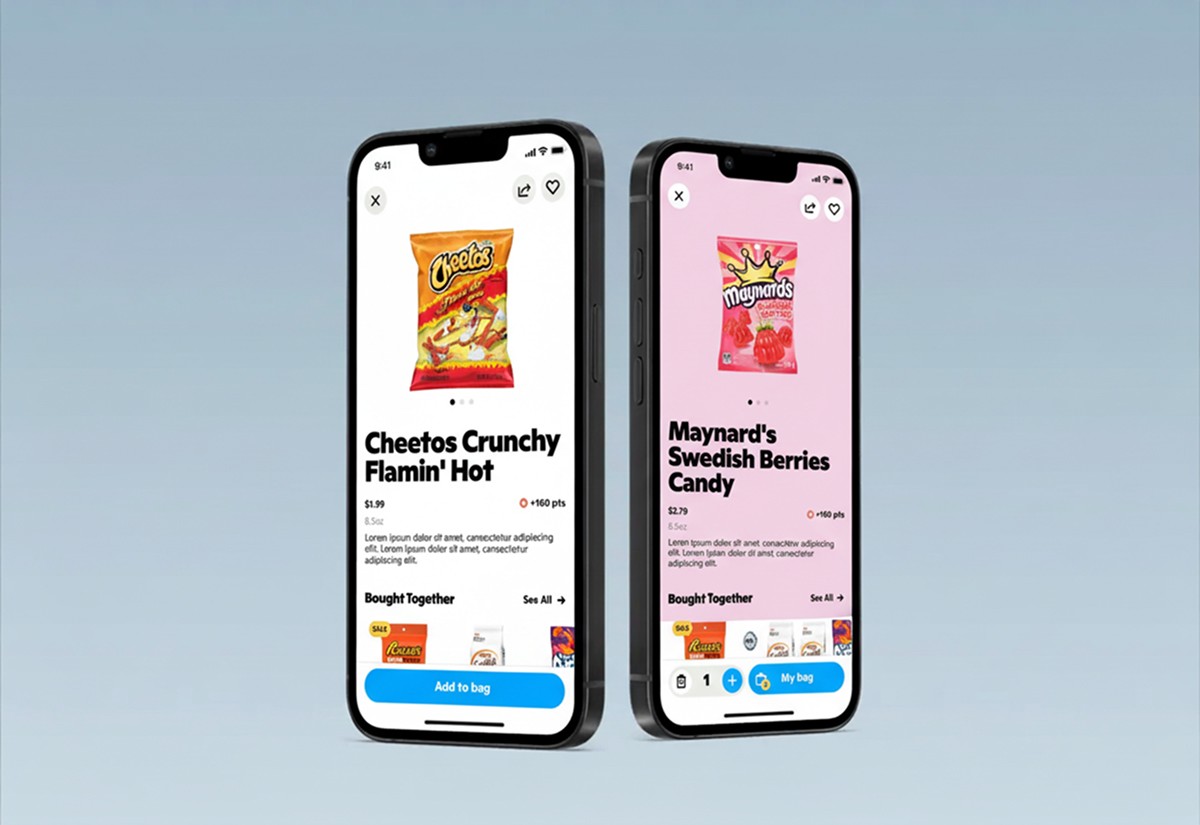Gopuff
Led a full redesign of a delivery service to eliminate design and technical debt to enable modern product expansion for the next decade.
7 years after it’s creation, GoPuff had grown from a college campus startup to being in 400 major US cities by 2021. With aspirations for more expansion, more product lines, and European markets, GoPuff needed to drastically overhaul their mobile app. I led the effort to define and design that outcome over 4 months.
Objective
A full redesign of GoPuff, paired with a full rewrite, to better support the business and its customers through the next decade of expansion.
Key factors were a vastly growing catalog, more product verticals (hot foods and pharmacy), and future flexibility for ongoing experimentation.
Highlights
Drove redesign strategy and execution over 4 months.
Facilitated executive workshops and alignment.
Led design team through information architecture, UX flows, and brand evolution.
Partnered closely with client side Product Managers to shape feature prioritization and rollout.
My Role
As the Design Lead & Manager I was core to managing both internal teams and external stakeholders.
Internally I managed a team of 2 other Product Designers and 1 Principle Designer while also coordinating tactical User Research sprints when necessary. I worked occasionally with a Design Director for high level support along with a Product Delivery Manager for operational support.
Externally I worked directly with Executive Leadership from Product and Technical Pillars including the co-founders of the company and their VP of Technology. I led the high level strategy, presentations, and narratives each week to maintain alignment and momentum for all parties.
Approach
Aligning the Vision
Our full redesign was also part of a complete technical rewrite. This meant our scope included a complete mapping of their existing feature set. The new roadmap had to reflect future priorities strategically defer or discard old product debt.
I led workshops and discussions on what to keep, what to evolve, and what to rebuild.
Action:
Among other workshops, we co-created a Product Map with the product team, combining user journeys, features, and epics into a single view.
Impact:
A product map artifact that had buy-in from all stakeholders from the start. Focus on new key features helped make the case for reduction elsewhere.
This cleared the path for an aggressive and wide-ranging design phase.
Designing for Discoverability
GoPuff had plans to expand their product inventory and offering types. While they started with snacks, they were expanding to hot foods and even pharmacy products. Their approach to wayfinding had to evolve substantially.
We defined Search flows as a primary method supported by browsing dynamically generated screens throughout.
Action: Built and tested wireframe scenarios for search, browsing, and casual exploration. Testing was done with a mix of GoPuff users and new users.
Impact: Validated new information architecture with users, ensuring products could be found quickly across categories.
Building for Personalization
Static layout systems limited how GoPuff could target different customers. Early on we identified a need for flexible, modern layout systems that would enable further iteration and experimentation.
Dynamic systems would be crucial in populating screens at every level to better support both Searching and Browsing workflows.
Action: Designed layout system and component variations for the home screen, product carousels, and detail pages — from “no promos” to “major event takeovers.”
Impact: Enabled tailored experiences by user segment, location, or event, freeing teams from competing for fixed screen space. Enabled rapid and cost effective experimentation by Product.
Evolving the Brand
GoPuff arrived with a brand update that lacked a digital execution, providing us the opportunity expand the digital language alongside the structural work.
This turned out to be a great opportunity to have the details of product inform aspects of the brand.
Action: Led design of 3 diverse creative territories that showed a wide variety of directions, leading to iteration on a final selected vision.
Impact: A new brand language with digital-first point of view that felt refreshed yet also rooted in their brand history.
Outcomes
Scalable IA
Executive Alignment
Flexible Brand System
Personalization Toolkit
Reflections
This project reinforced my strength in blending design leadership and product strategy — mapping complex systems, aligning stakeholders, and delivering a design foundation that can evolve with the business.







